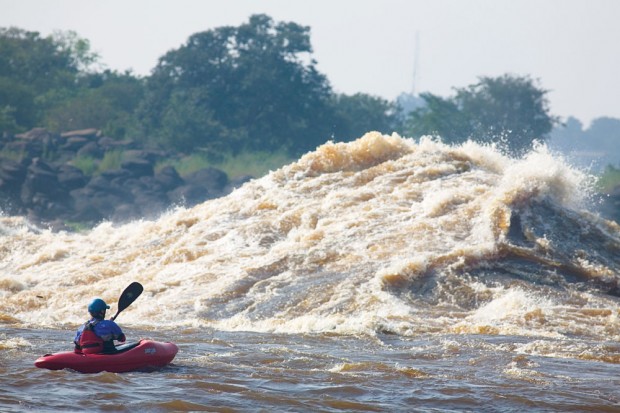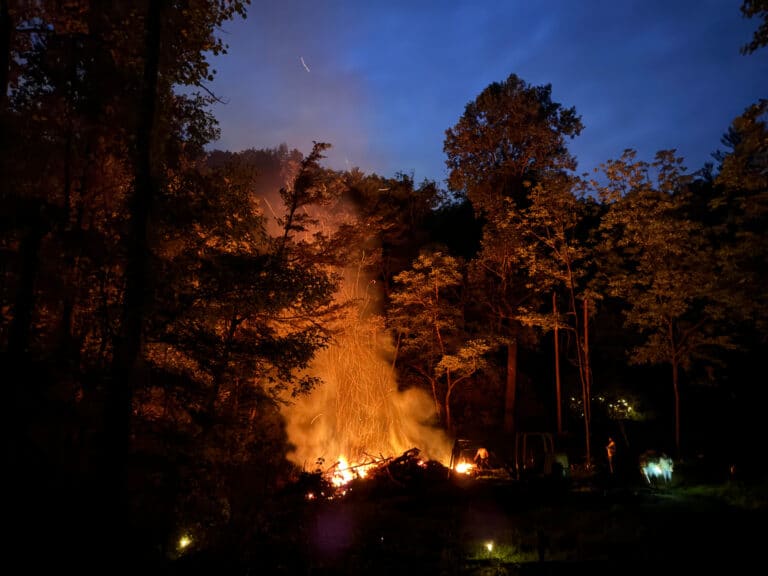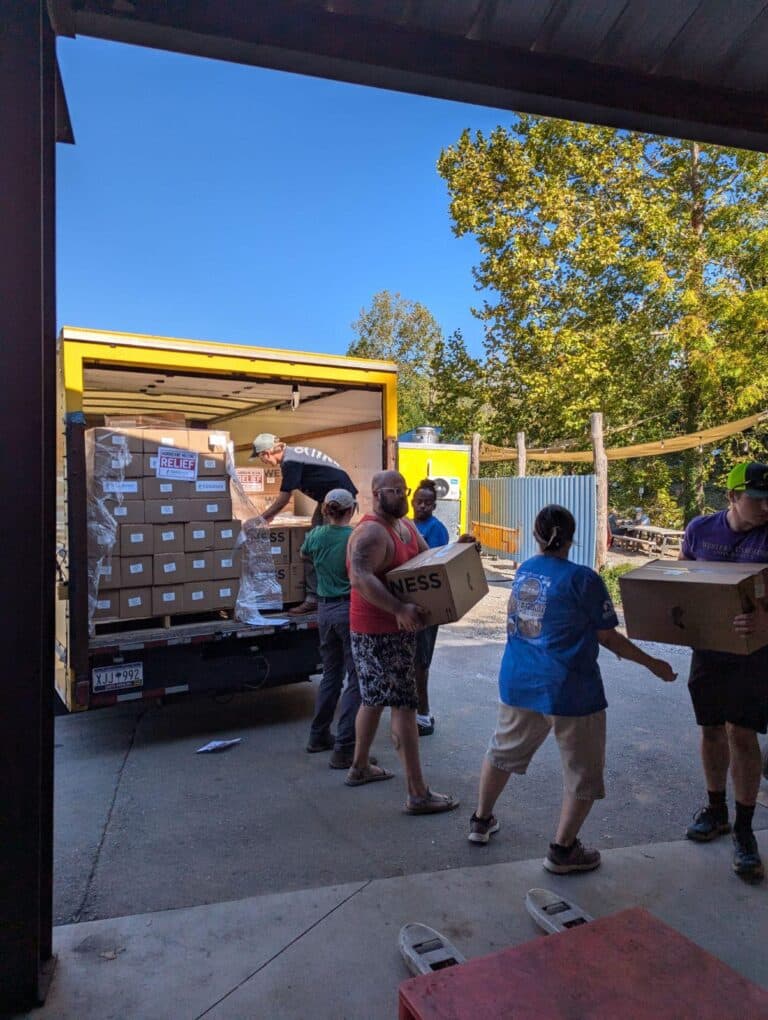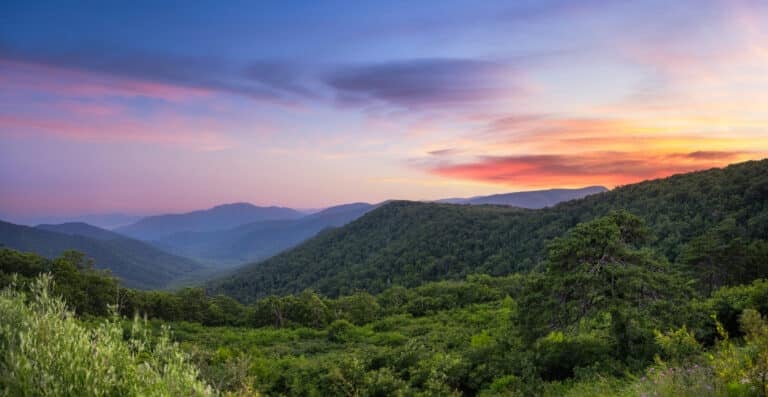We were a very experienced crew led by Trip Jennings and a team of paddlers who had notched firstdescents all over the world. The six of us were paddling high-volume creek boats needed to stay on the surface and carry all our stuff. We were loaded with gear for at least five days of self-support, plus an assortment of video and photo equipment, satellite phones, scientific instruments and batteries. Trip’s boat had been tricked out by National Geographic Society engineers with a hull-mounted sonar device that was linked to a deck mounted GPS dome. His boat was so heavy I could barely lift it.
But none of us had put on a whitewater run at 1.3 million cubic feet per second before, a level where the normal laws of hydrodynamics go out the window. And this stretch of river contained the largest whitewater rapids on the planet, along with waves as large as hurricane swells, house-sized holes, massive boils and eddy lines, and boat-sucking whirlpools.
We put in at the largest wave train any of us had ever seen, within sight of the decaying skyscrapers of downtown Kinshasa. From there we rounded a bend and left civilization behind. It was hard to believe that in the 21st century there could still be a 100-mile stretch of one of the world’s mightiest rivers that had never been successfully run. Picture the Potomac River as it runs through Washington D.C. Now imagine that ten miles upriver is a spot beyond which few people have ever been. It was remarkable, surreal, and terrifying all at once.
The currents were so strong and our loaded boats so slow that we had to be looking way ahead to anticipate our next stroke. As we found the rhythm of the Congo, we discovered a constancy of sorts to most of the rapids. A rapid would begin as a broad, glass-smooth tongue through a garden of holes, then build into a colossal wave train that would devolve into a mess of diagonal waves crashing into each other from every direction, and finally a run out into the pool. Then it would get scary.
Boating on the Congo is like being on a river in continual flood. Much of the time you’re running for your life. Where the rapids pool, whirlpools break out everywhere. Combined with crazy boils and vertical eddy fences, it’s a scary place to be. The whirlpools became our main concern as they would open up underneath, sometimes with little warning. I felt like a player in a giant computer game, trying to navigate my way across a bomb-strewn landscape. There was no true flat water, just a checkerboard of currents and countercurrents and boils with whirlpools spinning about.
Some of these water tornadoes were deep. Often the spinning tip of a kayak was all that was visible from the surface. Trip got taken to the bottom of one whirlpool and kept going down, a 15-second mystery move in his 85-gallon boat. He later said that he briefly considered swimming but knew that would be a very bad idea. On this river, if you swim, you die.
Near the end of the third day, I was crashing through a garden of psycho chop, with large waves coming at me from all directions. To my horror, a whirlpool spun open on my right and I was pretty much thrown in by a breaking wave. Down and around I went, bracing for my life. Toward the bottom of the ice cream cone, I looked up and saw waves breaking over the top of the vortex. That’s a sight I’ll never forget. I hung tight, didn’t flip and eventually the whirlpool petered out and released me.
Off the river was different than expected as well. I had been dreading hot, humid nights crammed three to a tent as soon as the sun set to avoid malarial mosquitoes. Instead we enjoyed comfortable evenings around campfires with nary a bug in sight. We camped on broad sand beaches near small river mouths or waterfalls and it was so pleasant that I often sat on the beach with a headlamp reading long into the night. Our campsites were so lovely in fact that they lured us into a bit of complacency. We saw few people, only a couple of fishermen in their dug-out canoes in the very flattest sections of river. The nearest villages were remote.
By our last morning on the river, we were feeling good. Most of the biggest water was behind us, and we figured we’d be at takeout by late afternoon. We were making breakfast when six armed men rushed out of the forest and into our camp screaming and pointing AK-17s at us. They were three Army soldiers and three ragtag villagers armed with guns and knives. We were made to lie face-down in the sand while they went through our stuff, rifle barrels pointed at the backs of our heads.
They didn’t seem to know what to make of us, our plastic boats and all our gear. Communication was difficult because of our bad French, but it became apparent that this was both a robbery and an arrest. After going through our valuables, they began to herd us off into the jungle. We told each other that we could not let that happen: we could not be separated from our boats and taken away from the river. We were five big strong guys, and even though we were outnumbered andoutgunned, the bad guys were being cautious with us. We figured that maybe we could jump them if the situation got so bad that we had no other choice.








